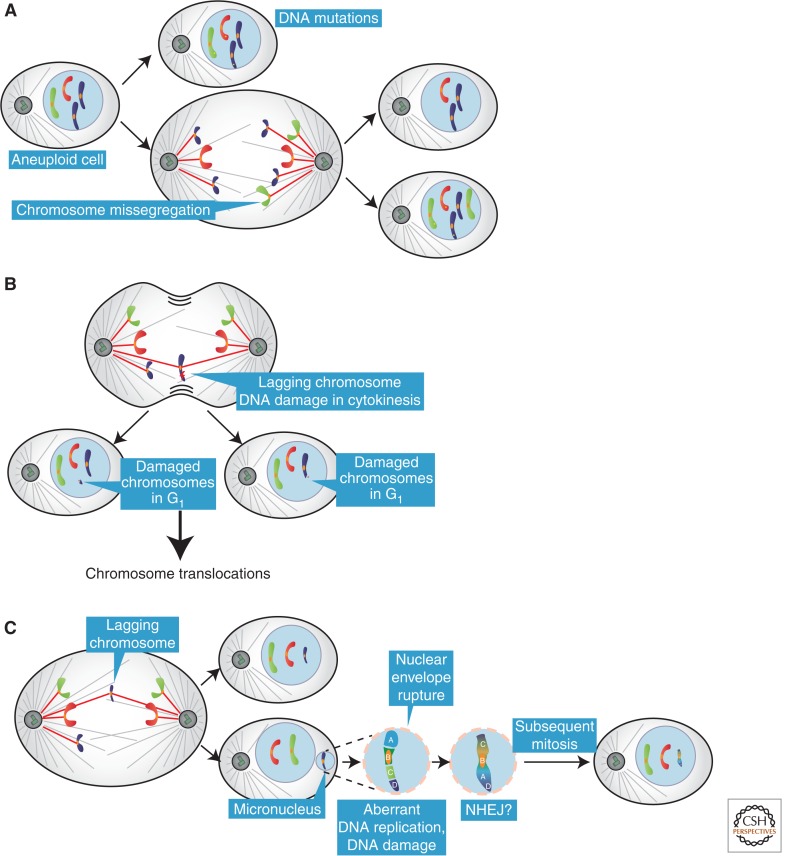Figure 2.
Effects of aneuploidy on genomic instability. (A) Aneuploid cells have an elevated rate of DNA mutations and chromosome missegregation compared with diploid cells. (B) A lagging chromosome in anaphase can be damaged if it is located in the proximity of the cleavage furrow. The damaged chromosome(s) can then generate chromosome translocations through nonhomologous end joining (NHEJ). (C) A lagging chromosome can be incorporated into a micronucleus if it does not reach the main chromatin masses. Chromosomes in micronuclei can accumulate damage and undergo fragmentation. The chromosome fragments in the micronucleus can be stitched together, likely through NHEJ, creating a highly rearranged derivative chromosome. In the subsequent mitosis, the nuclear envelope of the micronucleus can break down allowing the rearranged chromosome to be incorporated back into in the main genome.

